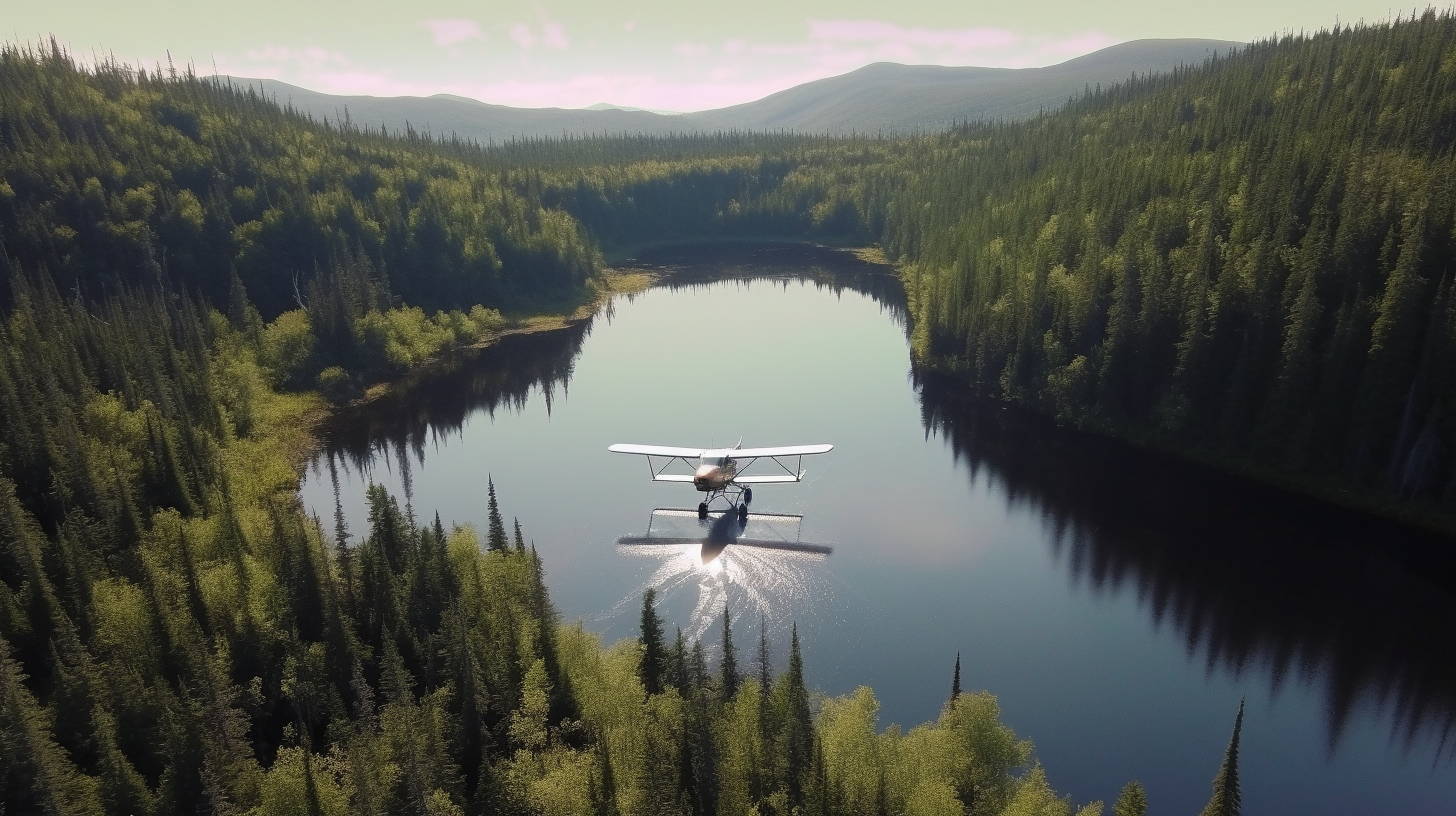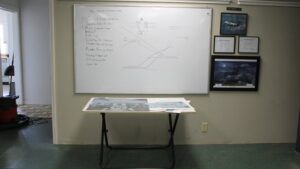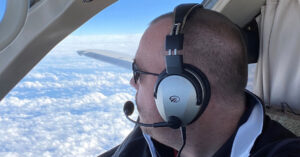How To Become A Bush Pilot?

Alright, let’s cut to the chase. A bush pilot, now that’s a breed apart. These are the folks who fly into the wild blue yonder, where there ain’t no runways, no control towers, and sometimes, no maps.
They’re the lifeline for folks living in the back of beyond, delivering mail, supplies, and even medical aid.
In this piece, we’re going to dive into what it takes to become a bush pilot, one of these high-flying heroes. Buckle up, it’s going to be a wild ride.
What Does It Take To Become A Bush Pilot?
Now, before you start dreaming of soaring over the wilderness as a bush pilot, there are a few boxes you need to tick.
First off, you need to be at least 18 years old and fluent in English. You also need to be in good physical and mental shape – flying is demanding work, and you need to be up to the task. Let’s not forget about education.
A high school diploma is a must, and some flight schools even require a college degree. In order to learn what’s necessary for bush pilot work and gain the needed experience, you will have to accumulate a certain amount of flight hours in a variety of conditions.
These are key requirements as you prepare to learn and gain experience in becoming a bush pilot. If you´re interested check our in-depth article on how to become a pilot.
How Much Does It Cost To Become A Bush Pilot?
Ok, let’s chat about your exciting dream of becoming a bush pilot! First off, you’d start with your basic Private Pilot License, and this adventure could set you back between $10,000 and $15,000.
Then, to be prepared for those unpredictable weather conditions, you’d probably want to get your Instrument Rating too – count another $5,000 to $10,000 for that.
Now, onto the real fun stuff – the specific bush pilot training. You’ll be mastering STOL (short takeoff and landing), emergency procedures, and wilderness survival.
Expect this part to cost between $3,000 and $7,000. And to top it all off, you’ll need a Commercial Pilot License if you’re thinking about making money from your skills, which is another $30,000 to $40,000.
Your dream could cost roughly $48,000 to $72,000. Priceless adventures await, right?
Pilot License and Certifications
To become a bush pilot, you’re going to need more than just a love for flying. First, you need your Private Pilot License (PPL) – that’s your ticket to fly solo. But to gain the experience needed to make a living out of it, you’ll need a Commercial Pilot License (CPL). This isn’t just a license, it’s your passport to turning your passion into a paycheck – a requirement for all aspiring bush pilots keen to learn this trade.
But there’s more to it. If you’re planning to ferry folks around in the wilderness, you’ll need to learn more and gain further experience with an Air Traffic Pilot License (ATPL).
This is the big leagues, the top of the heap in terms of requirements. And don’t forget the high-performance endorsement for those powerful birds, and the A&P License for aircraft maintenance.
Out in the bush, you’re the pilot and the mechanic, so you’ve got to know your aircraft inside and out. It’s a journey to become a bush pilot, but let me tell you, there’s nothing quite like it.
Here is an in-depth article on how long does it take to learn how to fly a bush plane.
Pilot Training And Requirements
Becoming a bush pilot involves specialized training for challenging environments like water, snow, or ice, using aircraft such as taildraggers that behave differently than standard tricycle gear planes.
This training develops pilots’ adaptability to their surroundings and enables them to use unconventional terrains as runways. Schools like Georgian Bay Airways in Ontario and Alaska Floats & Skis offer specific programs focused on off-airport operations, emergency protocols, and advanced aircraft control.(See our full guide on how to become a bush pilot in Alaska).
Even helicopter-centric schools like Mauna Loa Helicopters provide bush pilot courses covering mountain flying, short-field operations, and emergency procedures, all crucial for navigating the wilderness.
What Skills Do Successful Bush Pilots Have?
Success as a bush pilot hinges on adaptability, problem-solving skills, and precision flying. Adaptability is key given the quickly changing wilderness conditions, from climate to landscape and wildlife.
Swift decision-making and flexibility in altering plans according to environmental shifts are crucial.
Problem-solving plays a significant role as situations can, and often do, go wrong.
High-stakes, real-time decision-making is required, such as calculating remaining fuel and daylight hours and making safe choices swiftly.
Precision, not flamboyance, defines flying ability. Landing quickly in daunting situations, understanding your aircraft’s limits, and only pushing boundaries when necessary form the basis of flying accuracy.
There’s no margin for error when landing in small, confined spaces. Mastering such precision demands extensive practice at a competent flight school.
Bush Pilot Salary: Compensation and Benefits
Now, I won’t sugarcoat it – bush pilots aren’t in it for the big bucks. But that doesn’t mean you can’t make a decent living.
Salaries for bush pilots can vary quite a bit, depending on a few factors. Where you’re flying, who you’re flying for, the type of flying you’re doing – all these things can affect your paycheck. But here’s a ballpark figure for you – bush pilots can make between $30,000 and $100,000 annually.
It’s a wide range, but with experience and a good reputation, you can earn a respectable income.
Being a bush pilot isn’t just about the money. There are perks to this job that you can’t put a price on.
The freedom of the open skies, the thrill of adventure, the satisfaction of knowing you’re providing a vital service – these are the real rewards of being a bush pilot.
Revolutionizing Remote Access: The Evolution of Missionary Aviation
Melding compassion with courage, pilots’ work in the realm of missionary aviation is transforming lives. Seamlessly integrating commercial proficiency with bush planes expertise, they penetrate the remote world where few dare to tread.
The pilot flight, an act of service, ferries both hope and help. The planes, their silent partners, vary from sturdy commercial aircraft designed for longer distances to rugged bush planes, agile enough to land on unassuming strips.
These planes, often the lifeline for isolated communities, are more than just machines.
They’re emblems of humanity’s enduring spirit, as pilots steer them through the skies, bridging distances, and delivering change.
Are Bush Pilots In Demand?
Choosing a high-demand career is vital, and this holds for aviation too. Becoming a pilot involves months or years of training, certification, and gathering flight experience, sometimes supplemented by degrees in challenging fields.
The bush pilot sector, serving remote areas, is currently dominated by an aging male demographic, necessitating fresh talent due to the mandatory retirement age specified by the Federal Aviation Administration.
An estimated pilot shortage is predicted in the coming years, with the aviation industry needing approximately 27,000 new pilots by the end of this year and around 264,000 over the next decade, particularly for remote areas, which makes it a suitable time for aspiring pilots, especially those interested in bush planes.
The industry eagerly awaits passionate individuals ready to make a difference in remote areas. If you’re contemplating a career in the skies, now’s the time to start your thrilling journey toward becoming a pilot. The sky’s the limit!
Flying In A Bush Plane
These small, versatile planes are the unsung heroes of aviation, built to handle short runways, gravel strips, and even water landings.
Equipped with sturdy tires, powerful engines, and reinforced wings, bush planes are designed to tackle the wildest of wilderness. They serve as lifelines for remote communities, delivering supplies, transporting hunters and fishermen, and providing unforgettable aerial tours.
The experience of flying in a bush plane offers unparalleled freedom, panoramic views, and a true sense of adventure.
FAQ´S
How hard is it to become a bush plane pilot?
Becoming a bush pilot is quite challenging. It requires extensive training, including obtaining a Private Pilot License and an Instrument Rating, which tests theoretical knowledge and practical skills. Specialized bush pilot training pushes you further, mastering short takeoffs and landings, emergency procedures, and wilderness survival. Lastly, a Commercial Pilot License requires more exams and flight hours. But while tough, the adventure of flying in remote areas is gratifying.
Can you fly a bush plane without a license?
No, you cannot fly a bush plane without a license. Fishing a bush plane without a proper license is illegal and unsafe. In the U.S., at minimum, you need a Private Pilot License (PPL) to fly a plane. Operating a bush plane involves flying in remote, challenging environments requiring advanced skills. For paid operations, a Commercial Pilot License (CPL) is needed.
Can I land a bush plane anywhere?
Yes, you can land a bush plane in many off-airport environments, such as grassy fields, gravel bars, or even ice, which is part of the appeal. However, this comes with restrictions. You must ensure you’re not violating any local or national laws, not damaging protected environments, or landing on private property without permission. Safety considerations, weather conditions, and aircraft specifications limit where a bush plane can land.
First off, you need to be at least 18 years old and fluent in English. You also need to be in good physical and mental shape – flying is demanding work, and you need to be up to the task. Let’s not forget about education.
Becoming a bush pilot involves specialized training for challenging environments like water, snow, or ice, using aircraft such as taildraggers that behave differently than standard tricycle gear planes.
Bush pilots can make between $30,000 and $100,000 annually






